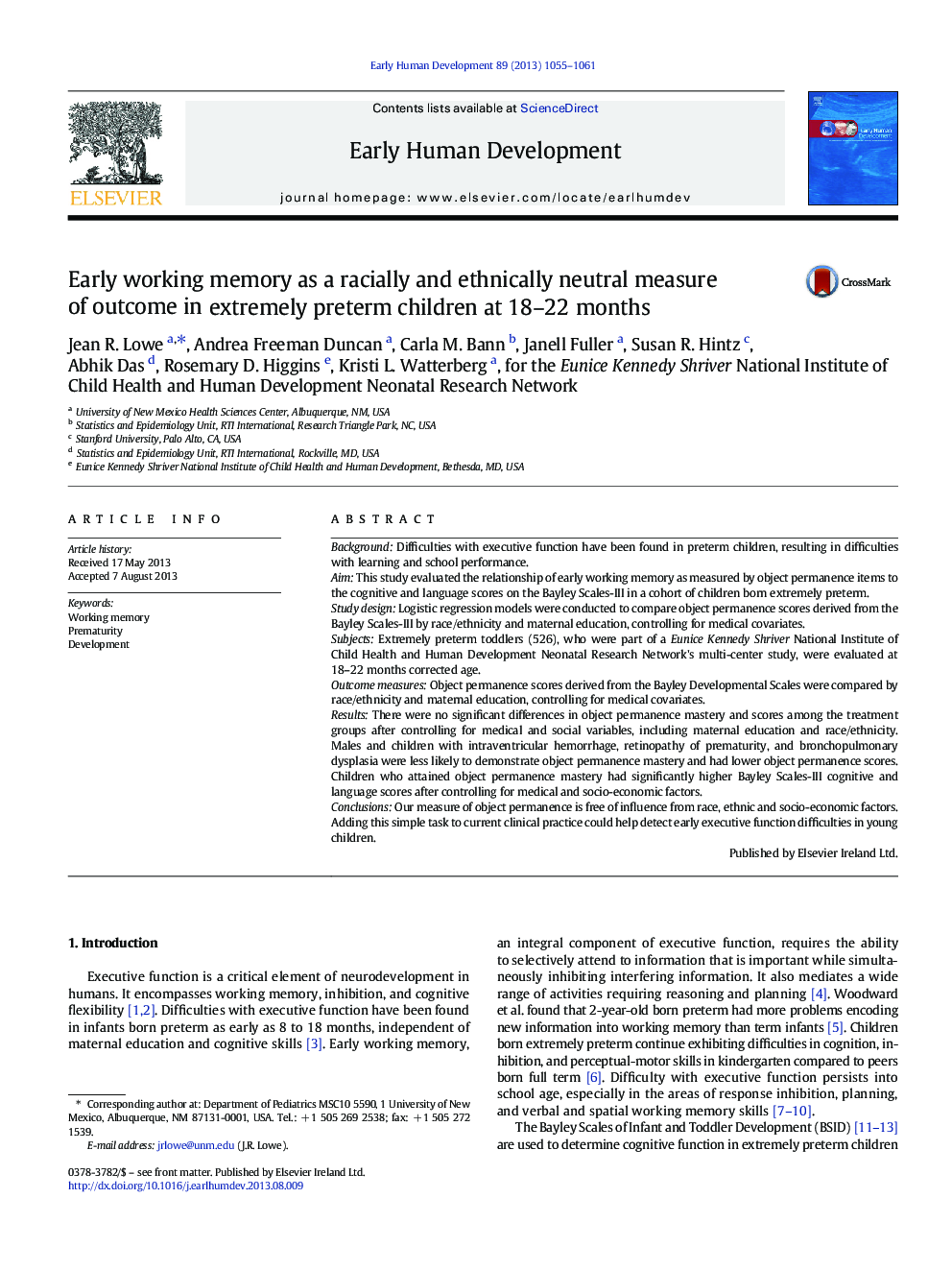| Article ID | Journal | Published Year | Pages | File Type |
|---|---|---|---|---|
| 6171948 | Early Human Development | 2013 | 7 Pages |
BackgroundDifficulties with executive function have been found in preterm children, resulting in difficulties with learning and school performance.AimThis study evaluated the relationship of early working memory as measured by object permanence items to the cognitive and language scores on the Bayley Scales-III in a cohort of children born extremely preterm.Study designLogistic regression models were conducted to compare object permanence scores derived from the Bayley Scales-III by race/ethnicity and maternal education, controlling for medical covariates.SubjectsExtremely preterm toddlers (526), who were part of a Eunice Kennedy Shriver National Institute of Child Health and Human Development Neonatal Research Network's multi-center study, were evaluated at 18-22Â months corrected age.Outcome measuresObject permanence scores derived from the Bayley Developmental Scales were compared by race/ethnicity and maternal education, controlling for medical covariates.ResultsThere were no significant differences in object permanence mastery and scores among the treatment groups after controlling for medical and social variables, including maternal education and race/ethnicity. Males and children with intraventricular hemorrhage, retinopathy of prematurity, and bronchopulmonary dysplasia were less likely to demonstrate object permanence mastery and had lower object permanence scores. Children who attained object permanence mastery had significantly higher Bayley Scales-III cognitive and language scores after controlling for medical and socio-economic factors.ConclusionsOur measure of object permanence is free of influence from race, ethnic and socio-economic factors. Adding this simple task to current clinical practice could help detect early executive function difficulties in young children.
